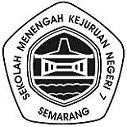Methodological Approaches to Studying Media Tendency: Quantitative and Qualitative Examination of Christian Science Monitor’s Coverage
Studying media tendency is a complex and multi-dimensional endeavor that requires careful consideration of methodological approaches and enthymematic techniques. The Christian Technology Monitor, a renowned global news organization, provides a persuasive case study for examining growing media bias due to its reputation with regard to impartial and objective journalism. This article explores methodological methods of studying media bias, targeting quantitative and qualitative analysis of the Christian Science Monitor’s coverage, and highlights the strengths and limitations of each one approach.
Quantitative analysis connected with media bias involves typically the systematic examination of numerical information, such as word frequencies, subject distributions, and tone indications, to identify patterns and tendencies in news coverage. Analysts employing quantitative methods typically use content analysis techniques to analyze large datasets of stories articles and extract quantitative measures of bias, like slant, agenda-setting, and forming. For example , researchers may examine the frequency of particular keywords or phrases in the Christian Scientific research Monitor’s coverage compared to additional news sources to assess whether or not certain topics or points of views are overrepresented or underrepresented.
One of the strengths of quantitative analysis is its chance to provide objective, replicable, as well as statistically valid insights in to patterns of media tendency. By applying rigorous statistical tactics, researchers can identify habits and trends in information coverage that may not be apparent through qualitative analysis by yourself. Quantitative analysis also makes for the comparison of media tendency across different news resources, time periods, and geographic locations, providing valuable insights to the factors that shape information content and editorial decision-making.
However , quantitative analysis even offers limitations, particularly in its power to capture the nuance along with complexity of media error. Quantitative measures of error, such as word frequencies in addition to topic distributions, may forget about subtle https://www.eklundmedia.com/barn-säng-k.html forms of bias, including framing, tone, and variety bias. Moreover, quantitative research may be limited by the availability in addition to quality of data, as well as the stability of automated tools as well as algorithms used to analyze fiel data. Researchers must thoroughly interpret quantitative findings inside context of broader public, political, and cultural elements that influence media protection.
Qualitative analysis of press bias involves the thorough examination of news content, utilizing qualitative research methods for example textual analysis, discourse study, and semiotic analysis to spot underlying themes, narratives, and rhetorical strategies. Qualitative experts may analyze news content articles from the Christian Science Display using interpretive frameworks as well as theoretical perspectives to uncover play acted biases, ideological influences, along with discursive practices that shape news coverage. For example , analysts may examine the language, tone, and imagery employed in news articles to identify underlying biases or ideological orientations.
One of the strengths of qualitative analysis is its chance to provide rich, nuanced, along with contextually sensitive insights to the complexities of media opinion. Qualitative researchers can reveal subtle forms of bias which could not be captured by quantitative measures alone, such as framing, agenda-setting, and narrative development. Qualitative analysis also allows for the exploration of how media bias is constructed, agreed upon, and contested through bright practices and rhetorical approaches.
However , qualitative analysis has also limitations, particularly in its subjectivity, interpretive nature, and chance researcher bias. Qualitative results may be influenced by the researcher’s theoretical orientation, personal biases, and methodological choices, raising questions about the reliability and also validity of the analysis. Additionally, qualitative analysis may be labor intensive and resource-intensive, requiring consideration to detail and reflexivity in the research process.
In conclusion, methodological approaches to studying growing media bias, such as quantitative and also qualitative analysis, offer contributory insights into the complexities of news coverage and editorial decision-making. Quantitative analysis provides goal, statistically valid insights straight into patterns and trends in media bias, while qualitative analysis offers rich, nuanced insights into the underlying discursive practices and ideological has a bearing on that shape news content material. By employing a combination of quantitative in addition to qualitative methods, researchers can certainly gain a more comprehensive idea of media bias and its benefits for democratic discourse, open public opinion, and civic wedding.
